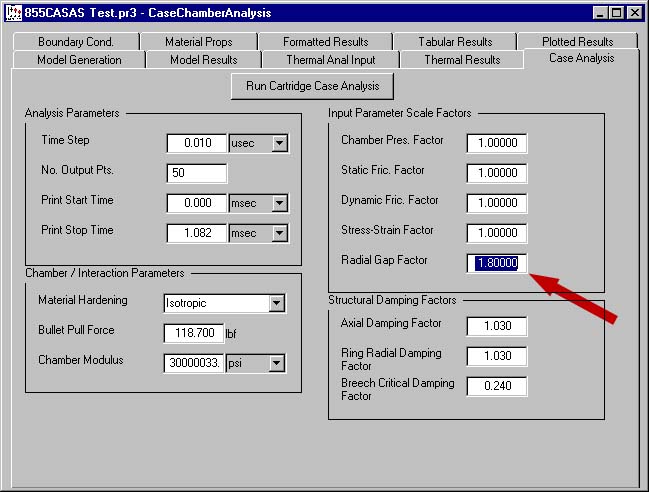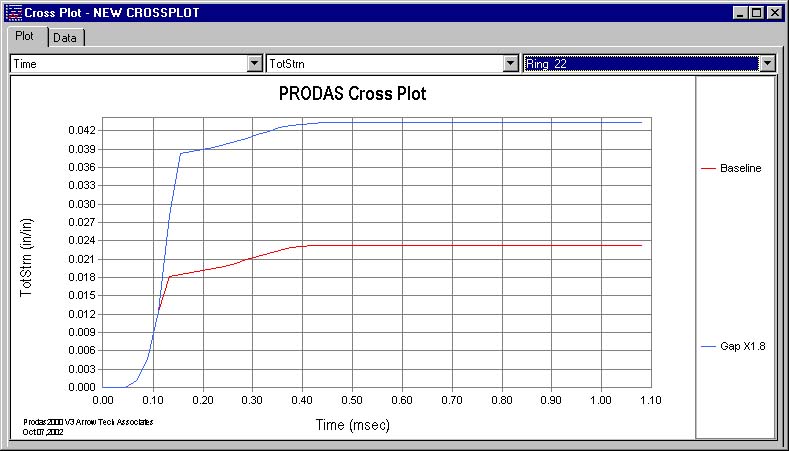

| Previous Top Next |
| Study the Effects of Thermal and Physical Variations |
The next step in evaluating a cartridge case and chamber design is to evaluate the effects of variations due to manufacturing tolerances and environmental conditions. The initial radial gap and headspace are two very critical parameters that often have significant variations. The case must be designed to insure that all rounds will fit in the chamber without interference. There must be some nominal gap to accommodate manufacturing tolerances. In some cases, there may be the possibility of a warm round being fed into a cold gun which requires a larger nominal gap to avoid interference in the worst case condition. This can occur in some aircraft installations.
The worst case for the cartridge case design is usually a cold case of minimum manufacturing dimension fired from a hot gun of maximum chamber dimension. This will result in the largest initial radial gap and will lead to the highest strain when fired. To evaluate this situation, calculate the largest gap that can occur taking into account temperature and manufacturing variation. Instead of adjusting the case geometric model to this new geometry (a cumbersome process) we can use the scale factor feature of CASAS. Let's say that our analysis results in a worst case gap equal to 180% of the nominal radial gap. We can simply set the Radial Gap Scale Factor to 1.8 as shown below and re-run the analysis.

Knowing that I would want to compare the data from this new run with the Baseline Case, I opened a cross plot window for the ring data before running the new analysis. Just a few notes about saving data for cross plotting :
When the new run finished, I added the 1.8 scale factor data to the cross plot with the following result.

As you can see the total strain increased by nearly a factor of 2. This same method can be used to evaluate the sensitivity of the design to other variations.
| © 2002 Arrow Tech Associates |